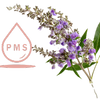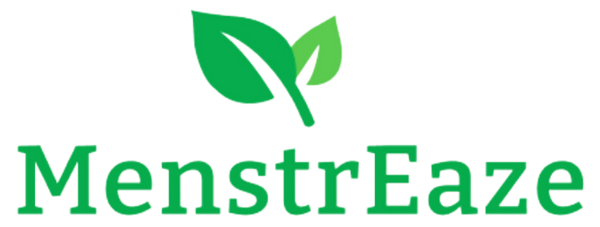
Chaste tree for PMS
Chaste tree is widely studied for PMS relief. Research shows it significantly improves symptoms like mood swings, breast pain, bloating, and insomnia. Two dosing regimens demonstrated high efficacy, with minimal adverse effects, making it a well-tolerated natural option.
View More in Research HubResearch Interpretation
Chaste tree is a shrub that bears violet flowers and berries. It is a common medicinal herb (the medicinal parts are the dried fruit and leaves). Chaste tree contains iridoids, flavonoids, progestins, and essential oils. This combination may help control menstrual cycles and ease menstrual pain. It may treat some endocrine problems. In fact, it has been shown to contribute to the improvement of premenstrual syndrome (PMS), particularly can relieve mild and moderate PMS symptoms. Moreover, the result of the present study showed that this valuable plant is helpful in alleviation of pain resulting from postmenstrual disease. Furthermore, it was also found that chaste tree is beneficial in infertility disorder.
Chaste tree is shown to be beneficial in PMS management. Chaste tree has also been shown to help balance of estrogen and progesterone during the menstrual cycle (and so it may alleviate PMS symptoms). It has been shown to help re-establish normal balance of estrogen and progesterone during the menstrual cycle. In addition, it was shown to be beneficial in post-menstrual cases and it can also contribute to treatment of infertility cases in both men and women. Dopaminergic compounds available in this plant help to treat premenstrual mastodynia (breast pain) as well as other symptoms of the premenstrual syndrome.
Protocols Studied in Research
Chaste Tree Based Supplement for Premenstrual Syndrome (PMS) Symptom Relief [1][2][3][4]:
- Protocol Option 1: Take 40 drops of chaste tree, administered for 6 days before menses, for 6 consecutive cycles.
- Protocol Option 2: Take 1 tablet (20 mg dry extract) daily for 3 consecutive cycles (or at least 3 cycles).
- Note: For certain symptoms (e.g., anxiety/depressed mood, cravings, mood swings, or insomnia), the same dosing schedules have been applied.
Outcomes for Breast Fullness, Irritability, Headache/Migraine, & Anxiety/Depressed Mood:
- Studies showed highly significant differences between the active and placebo groups (with p-values <0.0001 overall and <0.001 for improvements in the primary variable).
- Responder rates were approximately 52% in the active group versus 24% in the placebo group.
- Mild adverse events were reported (e.g., gastrointestinal discomfort), but none led to discontinuation.
Outcomes for Bloating:
- Active treatment demonstrated statistically significant improvement over placebo (p<0.0001 to p<0.001), confirming its effectiveness in reducing bloating.
Outcomes for Cravings & Swelling/Fluid Retention (Oedema):
- After three menstrual cycles, 93% of patients experienced a reduction or cessation of PMS symptoms.
- Both physicians (85% rating as good/very good) and patients (81–94% reporting significant improvement and excellent tolerance) confirmed the efficacy and tolerability of the treatment.
- Adverse reactions were minimal (reported in only about 1.2% of patients), with no serious events observed.
Outcomes for Mood Swings:
- Active treatment was significantly superior to placebo (p<0.001) with similar responder rates and a benign side-effect profile.
Outcomes for Insomnia/Sleep Issues:
- In a study enrolling 67 patients (64 completing the trial), all 17 PMS symptoms—including insomnia—showed significantly greater improvement with chaste tree extract than with placebo (most symptoms reached p<0.05).
Research Interpretation: Summary and Conclusion
Studies consistently show that Chaste Tree is an effective and well-tolerated treatment for a broad range of PMS symptoms. Two dosing regimens—either 40 drops for 6 days before menstruation or a daily 20 mg tablet—have demonstrated significant improvements compared to placebo. Key benefits include marked reductions in breast fullness, irritability, headache/migraine, anxiety/depressed mood, bloating, cravings, swelling, mood swings, and insomnia. Responder rates were notably higher in the active treatment group (around 52% versus 24% with placebo), and improvements were statistically significant (p-values generally <0.001). Minimal adverse effects were reported, confirming the safety and tolerability of the treatment.
In simple terms, the evidence strongly supports the use of chaste tree as a natural option for managing moderate-to-severe PMS symptoms.
Publications
[1] Zamani M, Neghab N, Torabian S. Therapeutic effect of VAC in patients with premenstrual syndrome. Acta Med Iran. 2012;50(2):101-6. PMID: 22359078.
[2] Loch EG, Selle H, Boblitz N. Treatment of premenstrual syndrome with a phytopharmaceutical formulation containing VAC. J Womens Health Gend Based Med. 2000 Apr;9(3):315-20. doi: 10.1089/152460900318515. PMID: 10787228.
[3] Schellenberg R. Treatment for the premenstrual syndrome with agnus castus fruit extract: prospective, randomised, placebo controlled study. BMJ. 2001 Jan 20;322(7279):134-7. doi: 10.1136/bmj.322.7279.134. PMID: 11159568; PMCID: PMC26589.
[4] Ma L, Lin S, Chen R, Zhang Y, Chen F, Wang X. Evaluating therapeutic effect in symptoms of moderate-to-severe premenstrual syndrome with VAC (BNO 1095) in Chinese women. Aust N Z J Obstet Gynaecol. 2010 Apr;50(2):189-93. doi: 10.1111/j.1479-828X.2010.01137.x. PMID: 20522079.

